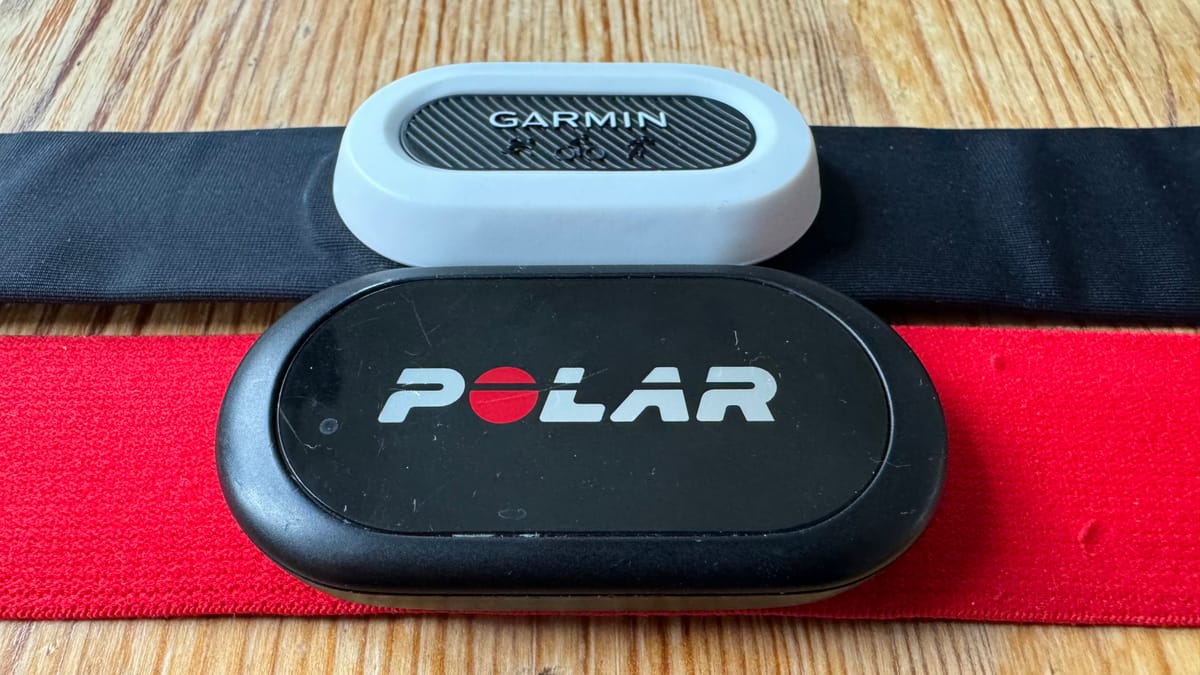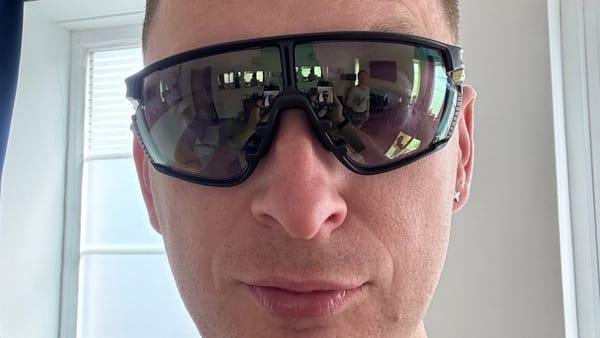On Garmin and Polar chest straps

Both Garmin and Polar make chest strap heart-rate monitors. Garmin's product looks expensive, but you only ever need to buy one: it'll fail within the warranty period and they'll replace it for free. Polar's are modular, and I haven't had one fail in many years of using them.
Taking a step back from the two monitoring solutions, and looking at sports technology holistically, I think its primary purpose is to grant the wearer the illusion of control. It allows us to believe, for a moment, that we can stand still and resist the river of time, because we have data that shows stuff.
With that argument, all sports tech is pure landfill fodder, and anyone who cares about the planet, the environment, &c should instead just be happy that they're out for a run, ride or swim, and enjoy the experience, training based off of how they feel.
This is utopian view obviously doesn't scale off of more than a handful of people such as Pig Monkey and Beau Miles (and even he has been seen using a Garmin, heard saying 'I've never waited for a watch to tell me I was ready to run before').
What does this have to do with chest straps? Simply, to further indulge in being human and making a comparison (that thief of joy), Polar's chest straps are modular - the electronics package is removable - and Garmin's is glued into place. When a Garmin chest strap fails, that's it. We can pretend it's going to WEEE, but really, that's going to landfill.
When a Polar strap fails, either the strap or the electronics package can be replaced, reducing waste. It could allow the wearer to harbour the illusion that the H10 is the more environmental, more ethical choice. They can tell themselves that they are better than the Garmin strap user, because of this.
So why do Garmin's chest straps fail?
- Historically (still the case in Australia), the battery compartment was closed with screws. Generally when swapping the battery, the integrity of the housing would be compromised, and the strap would stop working. No longer the case with the HRM Pro Plus (I find it hard to believe that's the actual, official name).
- The rubber used in the strap itself degrades, and smells awful, even with washing after each use.
They feel like planned obsolescence, except for the years of free replacements I've had.
Why would one continue to use a Garmin chest strap?
- HR during swimming: Garmin's wrist HR (and almost everyone else's) during swimming is like a broken clock; correct twice a day, by coincidence, and flakey the rest of the time. If you can properly secure your chest strap (HRM Swim, or the HRM Tri/Pro/Pro Plus under a wet suit), decent data is once again yours.
- All that Running Dynamics data, although we are now in the era where Garmin recognises the Stryd Duo as a Running Dynamics pod, or one could use an RD pod. Or the RD from the wrist, even though that's a smaller set.
- Scenarios where one has dynamic chest/upper body movement, or where objects may move laterally across the chest, such as climbing. When this happens, the sensor module of the H10 can become detached, leading to LOS.
That's it. I can't think of a single other reason to use one. Sure, they have al that fancy memory/caching stuff, but does anyone use that outside of the water? I'd love to know.
What's so good about the Polar H10?
- I think the strap is a lot more comfortable.
- I find that the strap grips my chest more reliably.
- Modular design allows for component replacement in the event of failure.
- Excellent reputation for accuracy, although I don't believe the Garmin strap has any issues there.
- I can get the strap in red.
How could the H10 be improved?
So the H10, like Polar's excellent optical sensor, the Verity Sense, can cache HR data. If software was written to allow a Garmin watch to extract this cached HR data, it would be nothing short of magical. The kind of behaviour that defies the monopolistic mindset of companies.
I know it can be done, because it's just code. I've even seen a Suunto 9 Peak Pro (stupid name...) pull HR data off a Whoop 4.0 strap after a swim, which surprised both me and Suunto support. Just code, blocked by priorities and politics.
Interestingly, Polar's current watches can't extract cached data from the strap, and insist that wrist optical while swimming is where it's at when I asked them. I don't think they swim very much...


